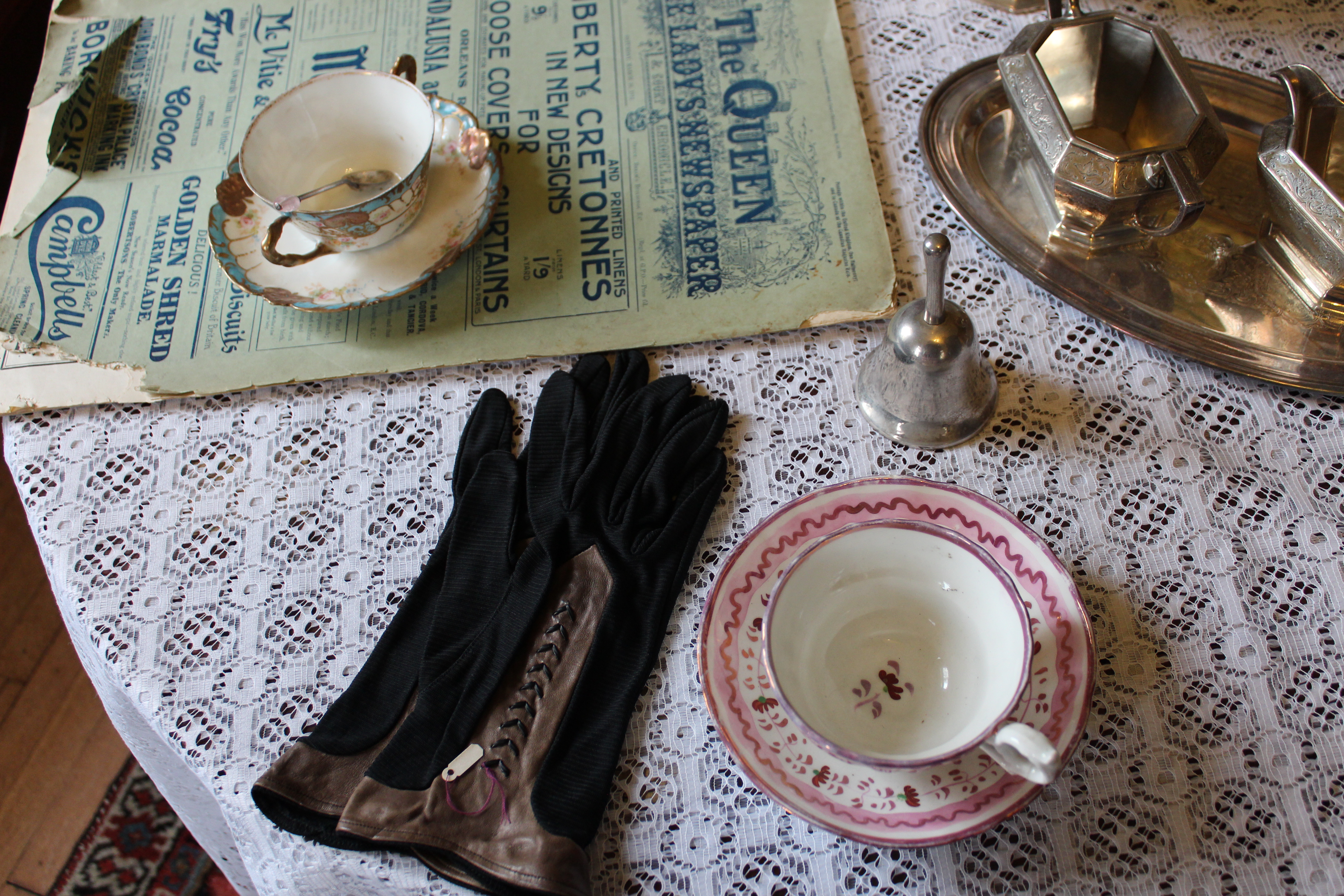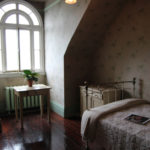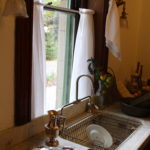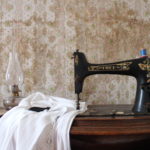It’s the age of a short attention span, and just as catchy headlines have had to change to grab your interest, so do historic house museums.
Their purpose as time capsules are often unchanging and roped off, inviting you to look but not feel. Personalities as cold as their wood floors and about as relatable. What’s lost is their significance as someone’s home, where the everyday happened and where people lived. Preservation often means the wear of occupation is “fixed”, and the life of the house is often overshadowed by its “duty” as a museum.
Franklin Vagnone author of “Anarchist’s Guide to House Museums ” has spent the night (yes, like a slumber party!) in house museums all over the globe as part of his “One Night Stand” series. His blog aims to change our culture’s ideas of house museums by looking at these spots as “vessels for life, social issues, politics, and habitation – not merely as decorative arts objects and collections artifacts”, and “away from viewing them solely as public venues and moving toward a more intimate and tactile appreciation of them as places of private, domestic life”.
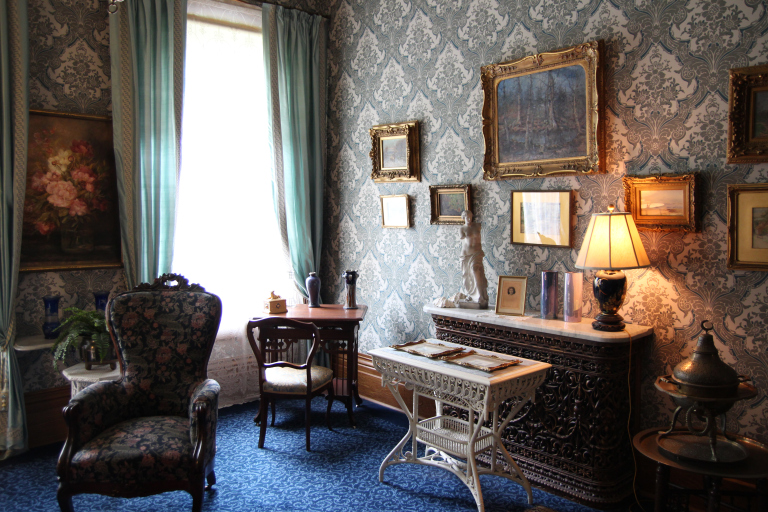
The John Brown House: Providence, Rhode Island
A “One Night Stand” at the John Brown House in Providence, Rhode Island touches wonderfully on how house museums displays have the power to tell a story but cannot relate it to their audience. The way a museum presents itself has been extensively studied, and it’s this fantastic text by Stephanie Moser that digs into the psychology and ideas that play into shaping museum visits. Moser calls museums “active agents” in the creation of knowledge, and works wonderfully with Vagnone’s interpretation of what house museums must do in order to achieve better relevancy.
In his visit, Vagnone gets unrestricted access to the home and is able to experience the exhibition of the house in an informal matter in order to understand how the house museum can better serve visitors. According to Moser, how the museum’s audience interacts and reflects plays a part in how the subject is represented. Vagnone observes that the house relies heavily on its pricey, carefully arranged furniture and perfectly restored details, an “emphasis on visual perfection” that removes “habitation and human experience”. Additionally, without the knowledge of staff to give information out one would not know that the owners of the home made their fortunes through the slave trade.
“I wonder what would happen if these scholars left, leaving us only the house itself? The narrative is of such extraordinary political and social importance that I wonder if the reliance on expensive furniture objects as stage setting doesn’t do a disservice to the larger educational experience?”
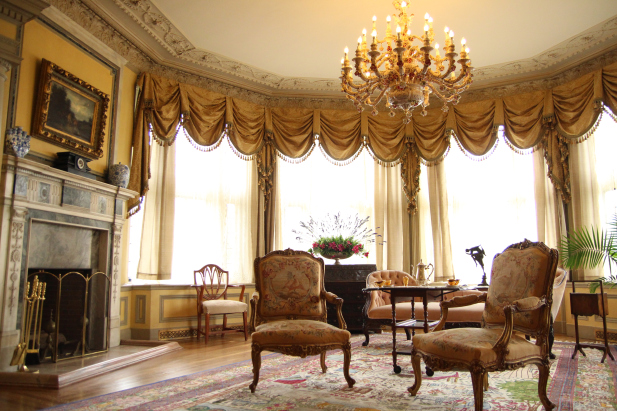
I worked in a house museum, Lambert Castle, for a summer and would often linger in empty rooms and think about what it was like to live there. I also thought of how the story of the exploited silk mill workers who worked for Catholina Lambert were hardly represented or discussed in tours. Much like the visitors to the John Brown House, the narrative was mostly focused on the furniture, art, and architecture of the home rather than the full picture of how it came to be. The system of meaning being created reduces these histories to nice looking things.
People loved to ask if Lambert Castle was haunted, but the only spectres were wisps of memory, the creak of a stair under the weight of feet, the worn smooth door, a crooked door frame. Were the uneven floorboards a symptom of old age, or was that the first thing visiting guests noticed when they were invited for a long weekend? Did Mr. Lambert ever notice the way the sun hit his windows in the mornings, and did the weird height of the door knob annoy him? I got to ask these questions, and I think it would be cool if visiting audiences were able to as well.
The homes as immersive experiences seem to discourage “passive observation” (Moser) because one can walk through it, but Vagnone points out this “professional appropriateness” is a carefully composed idea of what things may have been like. “Exhibits that are constructed environments are done to contextualize objects in relation to their original function” says Moser. Vagnone writes of secured shade screens in every window, a tactic used in preservation to limit sunlight exposure, leaving every room a uniform beige. Without the light changing throughout the day or with open windows to let in breezes, there is no life in the house itself or in relation to the place being where people actually lived.
How Can House Museums Evolve?
Vagnone is an excellent disruptor of House Museum practices and his campaign to shake up how we engage with these historic gems are what the heritage sector needs in the current day. With such limited time to make an impression and with audiences questioning the value of these experiences and how it relates to them, it’s no question that heritage professionals must adapt. Vagnone’s experiences are one of unique access to places that the regular guest doesn’t have, but his observations are feelings that resonate with us all. I wonder if within Moser’s text new theories would emerge, and what it would take for heritage organizatons to be open to unconventional adaption. Innovation, emotion, and questioning old practices are what will lead a House Museum rebellion.
I highly suggest picking up a copy of his book and reading more for yourself!
(All images in this post were taken by me, V. Gonzalez)
